Government, Resources, Work
Asian American and Pacific Islander women in Congress
Each year, the U.S. Congress consists of 535 voting members: 100 senators in the Senate and 435 representatives in the House. To date, Congress has had only 16 Asian American and Pacific Islander (AAPI) female voting members in its history. Patsy Mink, a Japanese American from Hawaii, became the first AAPI woman elected to Congress during the 89th Congress (1965–1967). Over 40 years later, AAPI women began to see a rapid increase in representation and diversity. For Women’s History Month, we analyzed the 16 AAPI women voting members ever to be in Congress by AAPI subgroup, political party, and U.S. state.
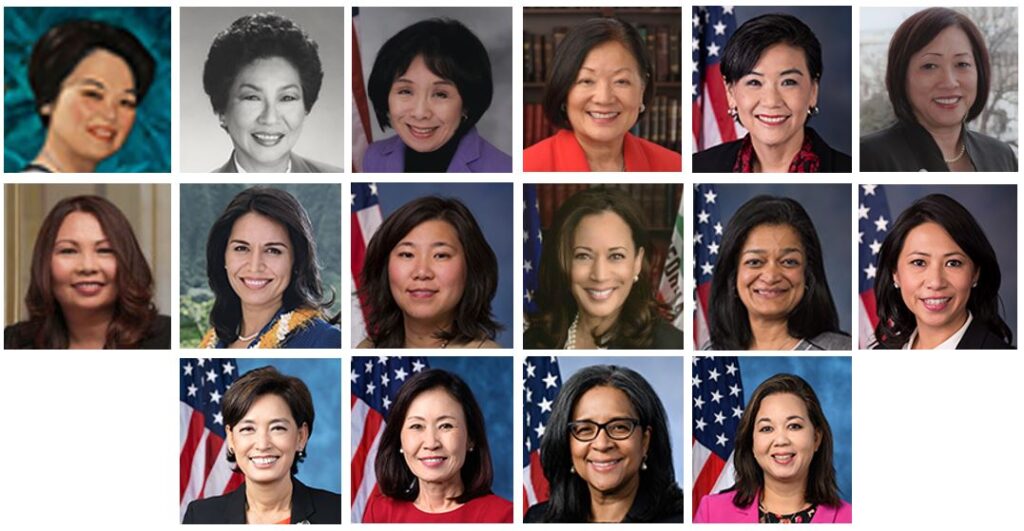
Each year, the U.S. Congress consists of 535 voting members: 100 senators in the Senate and 435 representatives in the House. To date, Congress has had only 16 Asian American and Pacific Islander (AAPI) female voting members in its history. The current 119th Congress includes 9 female voting members who identify as AAPI, and a total of 21 AAPI members of both genders—the largest AAPI representation so far, constituting 4% of Congress. For Women’s History Month, we analyzed the 16 AAPI women who have served as voting members in Congress.
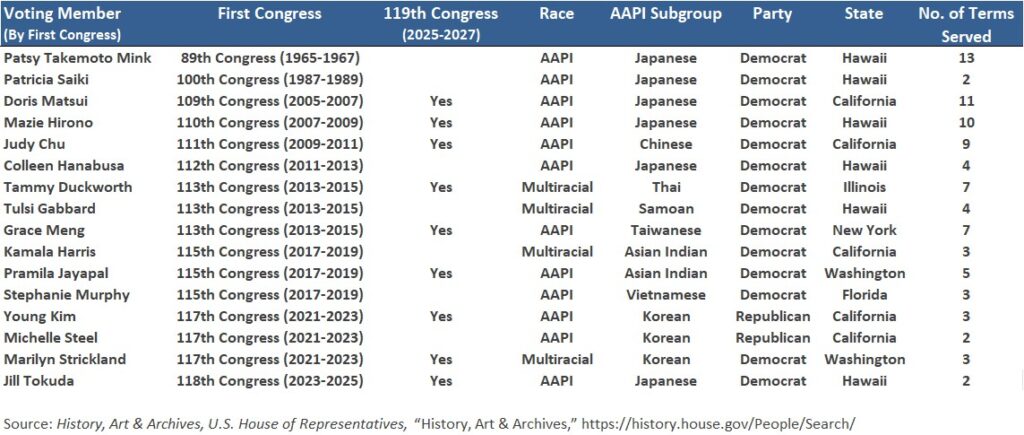
Rapid increase of AAPI Women in Congress is recent
The first AAPI member elected to the U.S. Congress was Dalip Singh Saund to the 85th Congress (1957–1959), a Democrat from California and the first Asian Indian and Sikh American to serve. However, AAPI representation remained exclusively male until Patsy Mink, a Japanese American from Hawaii, became the first AAPI woman elected to Congress during the 89th Congress (1965–1967). It took another 24 years for a second AAPI woman, Patricia Saiki of Hawaii, to be elected. Saiki served only one term in the 101st Congress (1989–1991). 16 years later, the 110th Congress (2007–2009) saw another 2 AAPI women serving simultaneously. Since then, representation has grown rapidly, with increasing diversity among AAPI women in Congress.
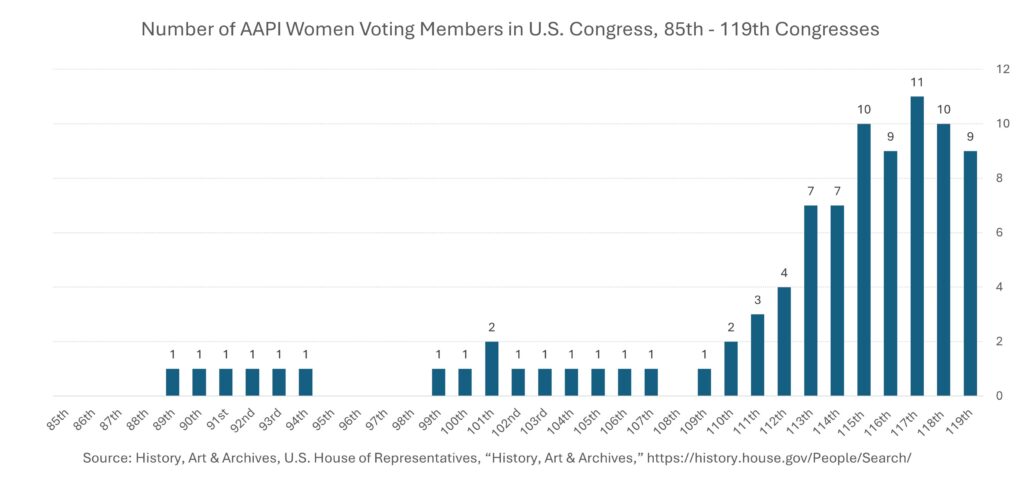
Ethnicity of AAPI Women in Congress
Of the 16 AAPI women who have served, over one-third or 6 are of Japanese descent, followed by Korean Americans with 3. Despite being the largest Asian American subgroup in the U.S., Chinese Americans have had only 1 female voting member in Congress —Judy Chu of California. Similarly, Tulsi Gabbard of Hawaii remains the sole Pacific Islander woman to have served as a voting member. 1 of only 2 Asian Indian women to serve Congress, Kamala Harris broke significant barriers by becoming the first female Vice President of the United States and later the Democratic Presidential nominee in 2024.
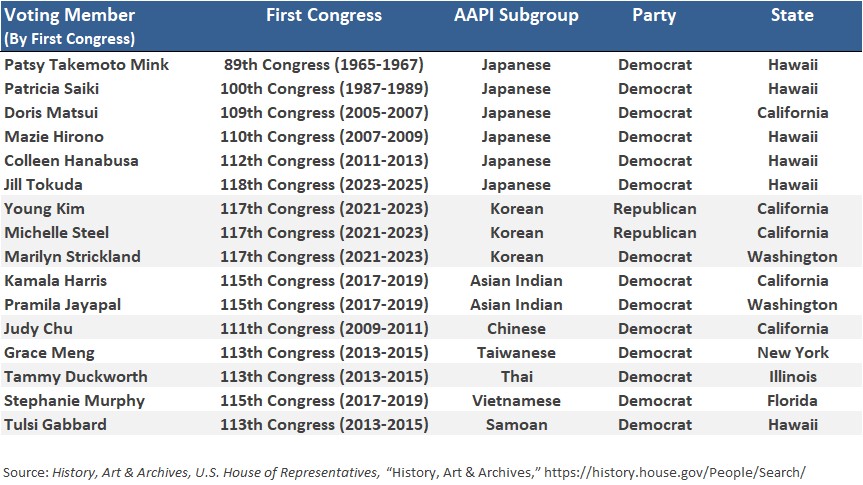
Party of AAPI Women in Congress
Among all AAPI women who have served in Congress, an overwhelming majority (14 out of 16) represented the Democratic Party. Only 2 Republican women—Young Kim and Michelle Steel, both from California—have been elected to Congress. Tulsi Gabbard switched from Democrat to Republican in 2024 and was confirmed as Director of National Intelligence in February 2025.
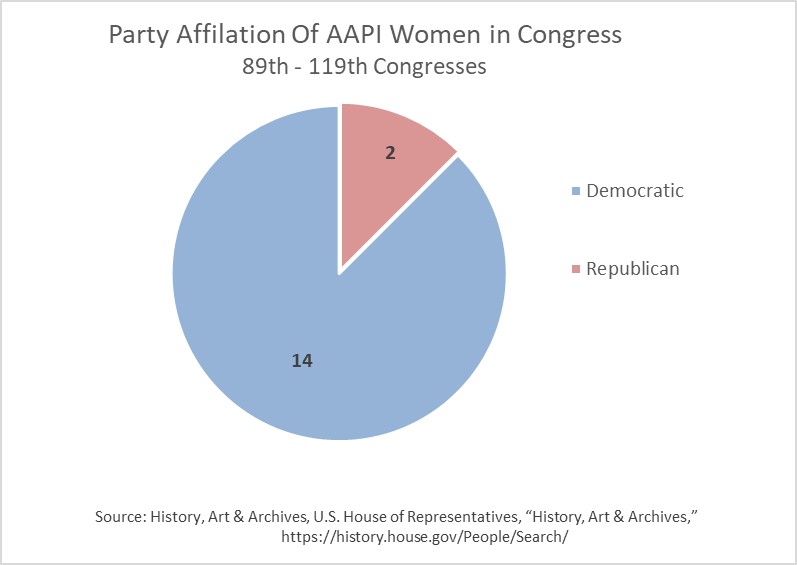
States electing AAPI Women to Congress
Geographically, Hawaii and California have sent the most AAPI women to Congress, with 6 and 5 representatives respectively. In contrast, states like New York and Texas—home to large AAPI populations—have seen limited or no representation. New York has elected 1 AAPI woman (Grace Meng), while Texas has yet to elect any.
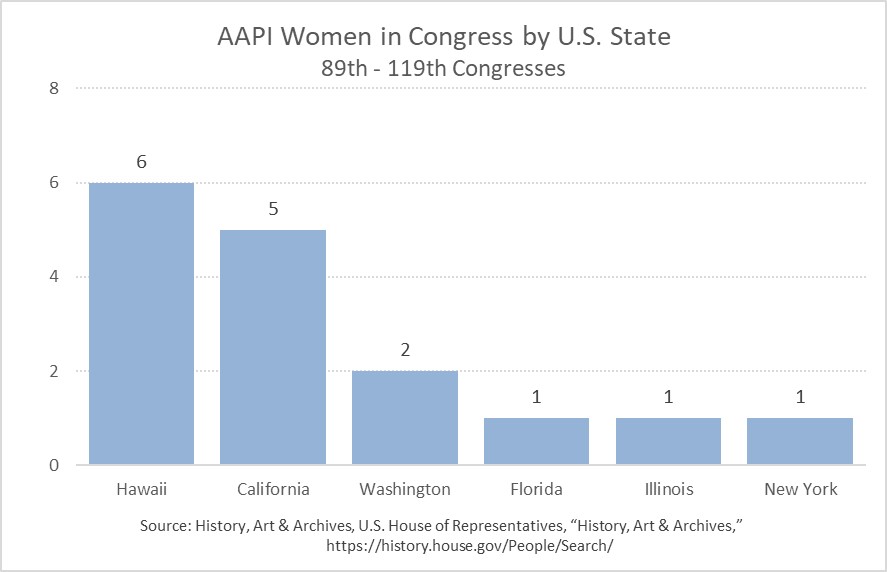
The growing representation of AAPI women in Congress reflects gradual but significant progress toward inclusivity and diversity in the U.S. government. However, disparities exist when comparing representation to gender, population size, and AAPI subgroups.
Helpful Resources
Asian and Pacific Islander Americans in Congress (History, Art & Archives, U.S. House of Representatives)
People Search (History, Art & Archives, U.S. House of Representatives)
119th Congress brings new growth in racial, ethnic diversity to Capitol Hill (Pew Research Center)
Get a monthly dose of our latest insights!

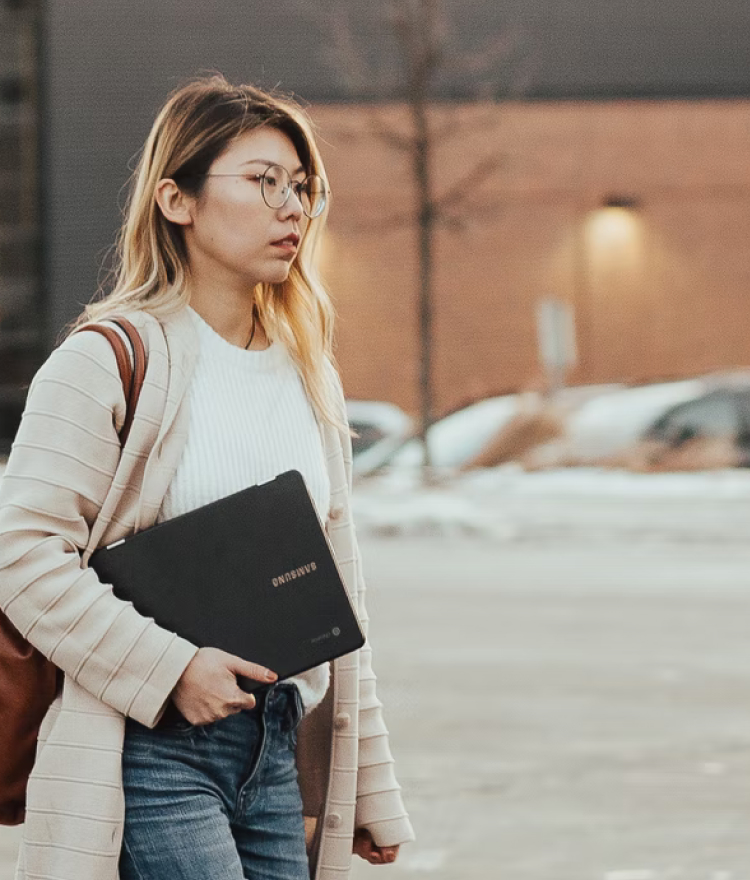
About
myasianvoice
At MyAsianVoice, we connect Asian Americans to surveys and research to bridge the Asian data gap.
Join our growing respondent list >>
